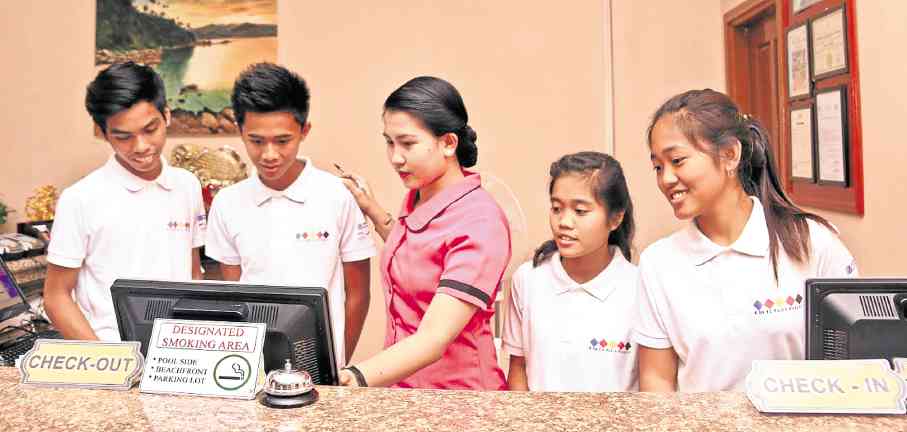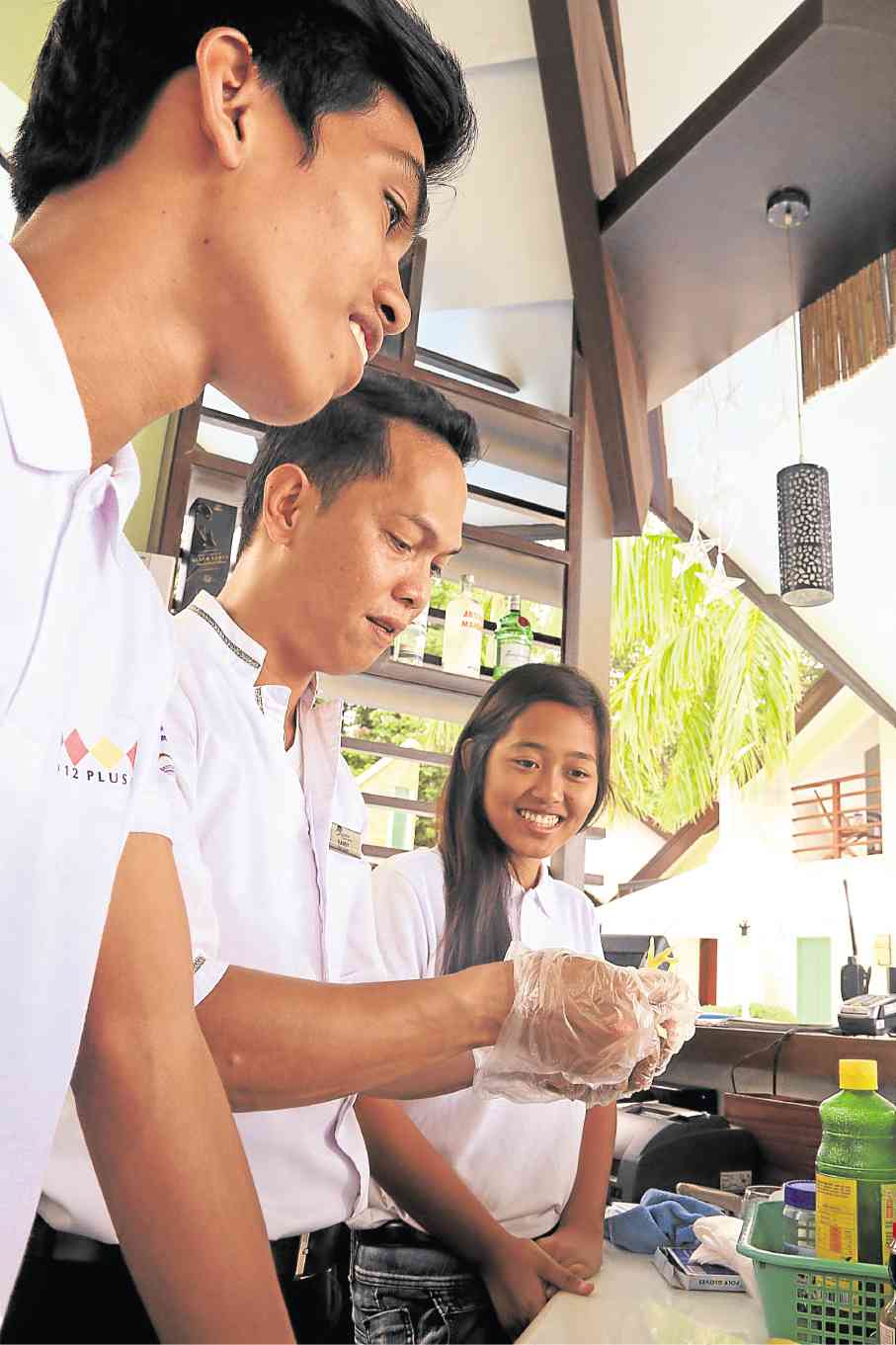K to 12 boosts Laiya tourism industry
Despite its extensive coastline and clear blue waters, Laiya, a barangay (village) of San Juan, Batangas province, still has a very low profile among beach lovers who cannot look beyond Boracay.
But word-of-mouth has turned tourism into a major income generator for the barangay.
And as the community’s tourism and hospitality industry continues to grow and the need for skilled people increases, Laiya may yet become a template on how the new senior high school (SHS) program can achieve its avowed goals through real school and industry collaboration.
SHS, which means two more years of basic education for young Filipinos and started this school year for most schools, is part of the K to 12 (Kindergarten to Grade 12) basic education reform program initiated by former Education Secretary Brother Armin Luistro.
The additional two years of schooling under K to 12, Grades 11 and 12, will remove a major impediment to employment for high school graduates – they finish too young at the average age of 16 to be legally employable, even if they have the training and skills to start working.
Article continues after this advertisementAt Laiya, the new K to 12 curriculum goes a step further.
Article continues after this advertisementIt does not only demonstrate true school-industry collaboration, but it also gives technical-vocation (tech-voc) students extra hours of training to make the transition from academe to the work force as smooth and seamless as possible.
The Philippine Chamber of Commerce and Industry Human Resources Development Foundation, Inc., with the support of the Deutsche Gesellschaft für Internationale Zusammenarbeit (GIZ) GmbH, a German foundation, has chosen Laiya as one of the pilot areas for the K to 12 PLUS Project, which gives SHS students more intensive and longer technical-vocational training outside the classroom in specific fields.
PLUS follows the dualized training scheme used in Germany where, as in most of Europe, North America and more developed Asian countries, there is prestige and respect, money, too, for tech-voc education and its graduates.
PLUS students learn both at school and in the establishments that host them.
In Laiya, this means 800+ hours of resort immersion for students.
Laiya and other PLUS pilot areas in Visayas and Luzon will hopefully develop “concepts (on) how to promote the cooperation of the private sector and to secure its role in the provision of practical vocational training” to make it more effective and more efficient.
A backgrounder on PLUS said, “Currently, vocational education and training are largely disconnected from practice and do not sufficiently match the needs of private sector. The youth are not sufficiently prepared during their vocational education for the actual requirements in the workplace, and are hence only partly employable.”
PLUS works with enterprises and vocational schools in developing programs for the tech-voc track of SHS, offering courses that will fill human resources gaps in host communities.
In Laiya, PLUS drew its trainees from the Laiya National High School which, principal Josephine Rosales said, had been preparing for K to 12’s full implementation since 2013 by holding orientation meetings with parents, students and other stakeholders.
The students, who spend every other week in host establishments and will continue their training during the summer break, were well-received in the more than a dozen tourist establishments that had joined the PLUS initiative.
Albert C. Mangilit, general manager of Estrellas de Mendoza, Laiya’s only hotel, said the student-trainees were already proving to be a big help at the hotel.
PLUS also fits well with the goals of Laiya Coco Grove, said Mary King Allain Quieng, human resource officer.
Housekeeper Celia Abanilla, who has worked at Coco Grove for some 19 years, expressed one of the major goals of PLUS and other K to 12 programs.
Abanilla said she expected trainees “to appreciate the fact there were job prospects right where they were and they would not have to go far to find employment.”

